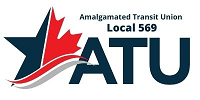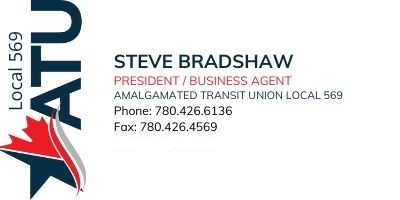Mayor Sohi and Councilors, I regret that I was unable to present to Committee today regarding the Snow and Ice discussion that Council had scheduled.
I wanted to provide some thoughts on the issue from a Transit and Transit Union perspective. It would have been great to have seen you all in person, but, as the last two years have taught us, we can still meet despite the distance.
Snow & Ice bring us challenges every single winter:
- Operators repeatedly contact Control to advise of snow windrows in bus stops. These create a severe safety hazard for everyone, let alone disabled transit riders. I, myself, have witnessed a teenager slip, literally, between the meter-high windrow and the bus to fall under the bus while attempting to board. Control repeatedly reports to Roads to have the stops cleared to safety. Most times, nothing happens.
- Twice in the 2021/22 season, Transit Service was stopped because of the dangerous road conditions. This is a step that, in my 30+ years’ experience, has never been necessary. It’s a step that was initiated by drivers themselves, in communication with the Control Centre.
- Riders with mobility challenges are often shut-in by the lack of snow & ice clearing between home and bus stops. Mobility devices, baby carriages and other items are not designed to negotiate meter-high windrows and ankle-deep snow, much less knee-deep snow.
- Slippery conditions are the source of injuries to riders and employees alike, every single winter, causing significant costs to the City and to Alberta Health care. The 2021/22 season may have been the worst yet with the ice storms the City endured.
- The same slippery conditions cause innumerable vehicle collisions burdening society with huge costs associated with the insurance claims and injuries.
- ETS, alone has experienced significant costs related to vehicle damage. Buses slipped off the roadways into ditches, medians and sidewalks cause damage to vehicle AND other property. Images of Transit vehicles out of service in medians, jack-knifed and immovable at CN Tower and others abound on the social media sites. Each one costs hundreds, thousands or tens of thousands of dollars to the City.
- Operators of buses involved in snow-and-ice incidents are often accused of carelessness and subject to discipline arising from the incidents. This creates an additional layer of costs to address the related Human Resources issues and puts employees’ jobs needlessly at risk .
- With the advent of On Demand service, walks to bus stops in those areas are even further than they were, exacerbating the shut-in and difficult mobility problems.
- Regional service plans will cause even further distances between stops all over the City, not just the ON-Demand areas, causing further delays and safety risks.
Edmonton Transit is the primary source of transportation for tens of thousands of Edmontonians and the transportation mode of choice for tens of thousands of others. Priority has to be given to ensuring this important means of transportation can carry on safely.
Traction materials should be deployed first onto ETS routes, which, not coincidentally, are the main routes travelled by people in personal automobiles. Windrows affecting access to Transit need to be eliminated. Stops should be closer together. Clear and direct control of the workforce who deliver the service and the mandate provided by Council will ensure the best, most cost-efficient result.
For these and the host of other issues brought by other respondents on the matter of seasonal road safety, ATU is encouraging Council to take a very close look at how to better prepare and service our City streets when winter again brings its challenges a short few months from now. Planning a detailed, effective snow and ice program now will cost the City less in the long run, as down time, personal injury and property damage can be significantly reduced.
Thanks for taking the time to read our thoughts.

